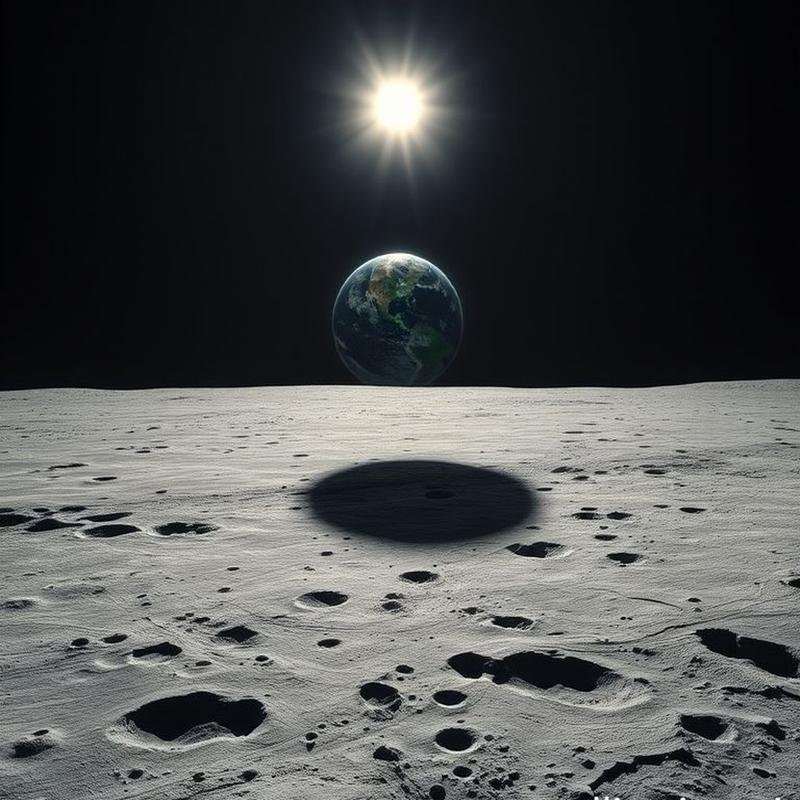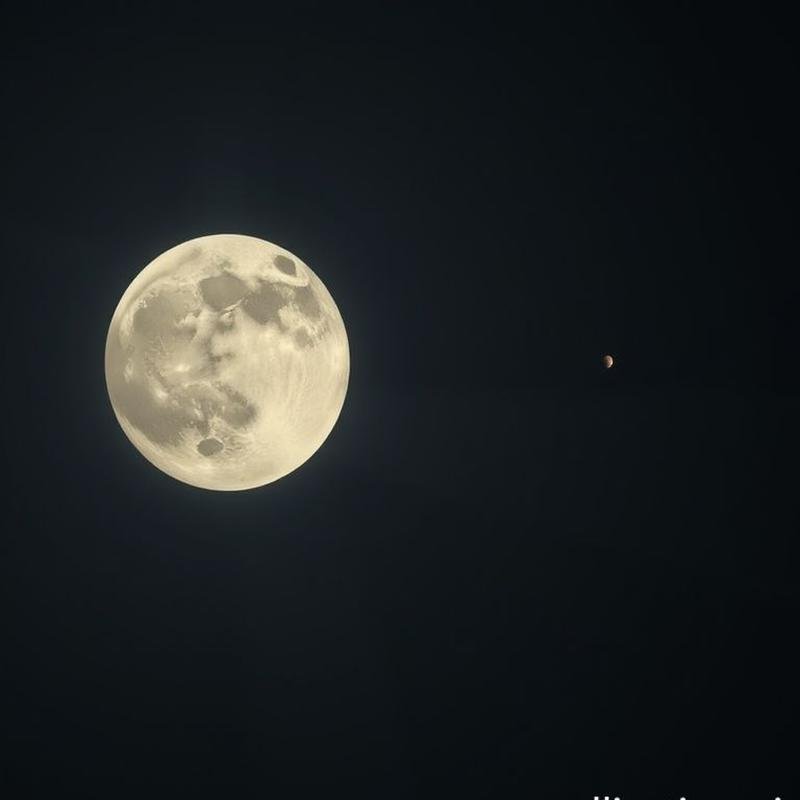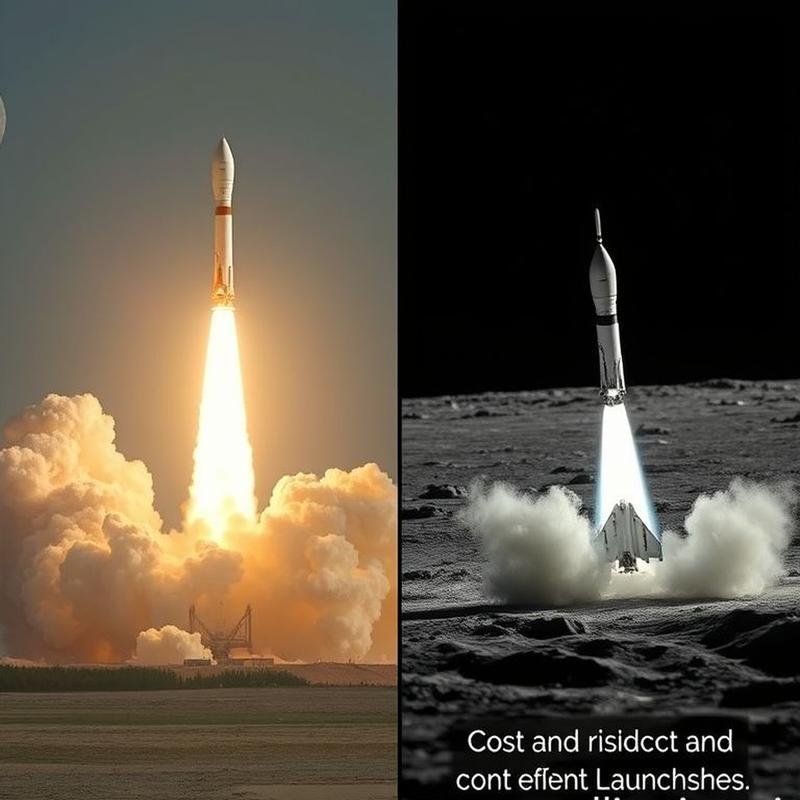Lunar Outpost: A Potential Space Station and Future Lunar City.

Lunar Outpost: Moon Base for Space Exploration
The Moon is not the ultimate destination, but rather a crucial stepping stone. Could this long-revered celestial body, the muse of poets, be the key to unlocking access to the distant stars? While this proposition may initially seem fanciful, its realization hinges on transforming the Moon into a comprehensive space station, a strategic launchpad for missions to Mars and beyond. Can we effectively manage this challenging environment, harness its valuable resources, and establish a permanent, thriving human presence?
Envision a lunar station that transcends the concept of a sterile scientific laboratory, evolving into a vibrant, integrated city. This hub would be populated by ambitious scientists and engineers, extracting vital fuel from lunar ice and constructing advanced spacecraft for deep-space exploration. This vision, while seemingly audacious, may be the necessary catalyst to overcome terrestrial limitations and explore new frontiers. Are we prepared to embrace this compelling challenge and inaugurate a new, transformative chapter in the history of space exploration? This discussion will delve into the details of this extraordinary journey, revealing possibilities that extend beyond conventional imagination.
Why the Moon?
Its proximity makes it an ideal starting point, a mere cosmic whisper compared to the distant roar of Mars. At approximately 384,400 kilometers, the distance is significantly less than the millions of kilometers separating us from the Red Planet. This reduced distance translates to lower costs, mitigated risks, and expedited access to another world. Crucially, it provides an invaluable opportunity to study the long-term effects of space on humans before embarking on more ambitious voyages.
Beyond proximity, the Moon’s lower gravity, approximately one-sixth of Earth’s, offers significant advantages. Launching spacecraft from the lunar surface requires less energy, less fuel, and results in substantially lower costs. This makes the Moon a true space gateway, an ideal launchpad to Mars and other destinations, circumventing the complexities and expenses associated with Earth-based launches.
A wealth of resources lies beneath the lunar surface, most notably water ice. The Lunar Prospector probe’s findings confirmed the potential for extracting water and converting it into fuel, oxygen, and other essential resources. Furthermore, the presence of Helium-3, a rare isotope coveted by nuclear fusion scientists as a clean, inexhaustible energy source, holds the promise of revolutionizing energy production on Earth.
The Moon’s electromagnetically quiet environment provides an ideal setting for astronomers seeking to observe the universe without interference. This natural space observatory offers a unique and unparalleled perspective on the cosmos, free from Earth’s atmospheric noise and pollution. The Moon is not merely a barren rock; it represents a significant opportunity and a key to our future in space.
The Challenges of Lunar Living
However, this promising landscape presents formidable challenges. Establishing a lunar space station is not without its difficulties. Despite its captivating allure, the Moon harbors a harsh and unforgiving environment.
Imagine enduring the stark reality of a perpetual black sky, bombarded by solar radiation with an intensity two hundred times greater than that experienced on Earth. The threat of cancer and other radiation-related illnesses is ever-present. Lunar days and nights are not simply transitions between light and darkness, but rather journeys between extremes: scorching temperatures of 127 degrees Celsius, capable of damaging equipment, followed by a precipitous drop to -173 degrees Celsius during the frigid night. Developing materials capable of withstanding these extreme thermal variations remains a significant hurdle.
Adding to these challenges is the constant threat of micrometeoroids, cosmic projectiles traveling at speeds of 20 kilometers per second. Without an atmosphere to provide protection, the risk of impact damage is continuous. Furthermore, NASA’s LADEE probe discovered that the lunar surface releases electrically charged dust, which can infiltrate electronic devices, disrupt operations, obscure visibility, and further complicate lunar missions.
Overcoming the Obstacles
Despite these obstacles, surrender is not an option. Human ingenuity knows no bounds, particularly when survival is at stake. Just as we have overcome challenges on Earth, we will leverage innovative technologies to conquer the Moon’s harsh environment.
Consider the potential of large-scale 3D printing, constructing robust lunar bases layer by layer, utilizing lunar regolith as the primary building material. NASA is actively pursuing this approach. Simulation experiments have demonstrated that, with proper processing, lunar regolith can be transformed into surprisingly strong lunar concrete, capable of withstanding significant compressive forces.
ICON is collaborating with NASA to develop advanced construction robots, which will be deployed to the Moon prior to the arrival of the first astronauts to begin constructing essential habitats. While the task will be demanding, each step forward brings us closer to our objective.
Protecting these habitats from the Moon’s intense radiation environment can be achieved by covering them with a protective layer of lunar regolith, just two to three meters thick. This readily available natural shield offers a viable solution to mitigate the dangers of space radiation.
The European Space Agency is also exploring the use of concentrated sunlight to melt lunar regolith and create durable lunar bricks. Furthermore, China has undertaken a pioneering initiative by sending plant seeds to the far side of the Moon, in a bold attempt to cultivate life on the lunar surface and provide food and oxygen for future astronauts.
The Economic and Scientific Returns
Consider the significant economic and scientific returns that a lunar space station could generate. This station would not only serve as a research laboratory but also as a strategic launchpad to Mars and asteroids, potentially reducing fuel costs by up to 40%. It represents a gateway to vast new frontiers of exploration.
The unique lunar environment, characterized by near-absolute vacuum and minimal gravity, provides opportunities for scientific experiments that are impossible to conduct on Earth. Materials science, fundamental physics – entirely new avenues of discovery await.
The Moon’s valuable resources cannot be overlooked. The frozen water at the poles, for example, can be converted into fuel and oxygen, reducing our dependence on Earth and potentially lowering long-term operating costs by up to 60%. The space resources market, including lunar resources, is projected to reach a trillion dollars by 2040. This represents a significant economic opportunity.
Developing the technologies required to establish a lunar station, such as closed-loop life support systems and 3D printing using lunar materials, will drive revolutionary innovations that will impact life on Earth in critical areas such as sustainability and healthcare. NASA plans to establish a permanent lunar base, Artemis Base Camp, by 2030, a significant step towards sustainable human exploration of the Moon and preparation for manned missions to Mars.
As we observe the Artemis 2 mission’s trajectory towards the Moon, it is clear that this is not merely a return trip, but a harbinger of a new era. An era in which we transcend terrestrial limitations, driven by an ambition limited only by the vastness of the universe. While NASA estimates the cost of building a permanent lunar station to be between $10 and $20 billion, the substantial scientific and economic benefits far outweigh this investment.
The vision of Dr. Nora Al Matrooshi, the first Emirati astronaut, that lunar exploration presents a unique opportunity to develop new technologies and achieve unprecedented scientific discoveries, is inspiring. With the significant advancements in cargo transport technology promised by SpaceX, this dream is closer to realization than ever before. The Chinese Change 4 mission has revealed valuable insights into the Moon’s composition and evolution, and the Moon still holds many more secrets. Building a lunar space station is not just a major engineering undertaking, but a strategic investment in the future of humanity and a bold step towards exploring the infinite stars.
Conclusion
In conclusion, establishing a lunar station is an ambitious yet achievable goal, offering significant benefits for space exploration, scientific advancement, and economic development. It is not merely a dream, but a logical progression towards a future in which we become true spacefarers, capable of unlocking the secrets of the distant universe.










